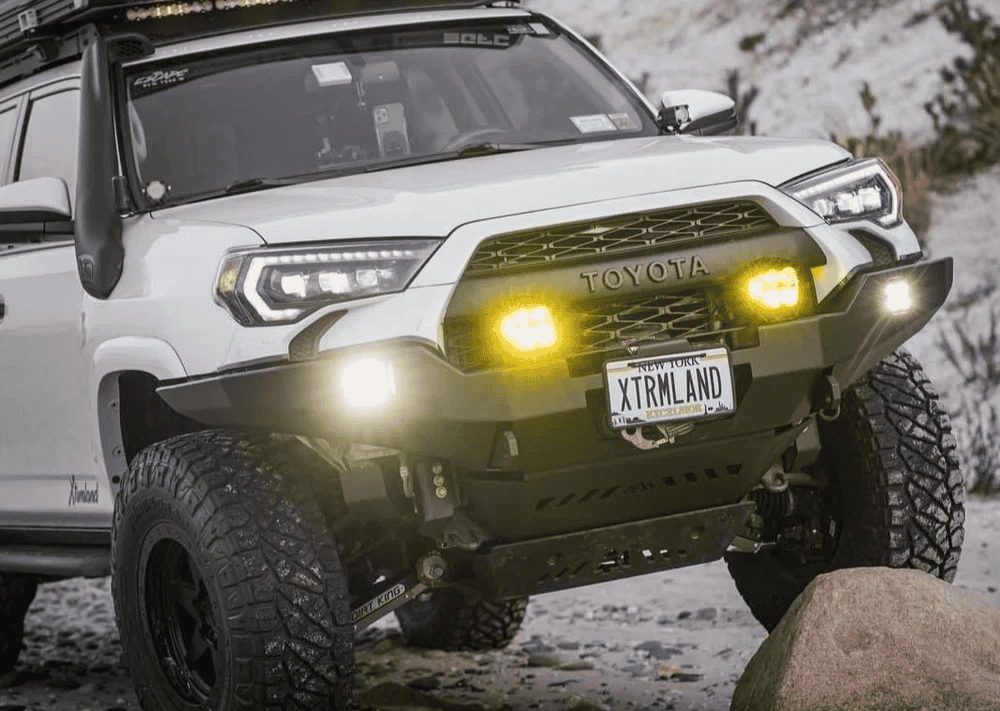Overland Vehicles

A tundra overland truck starts with fundamentals. The second gen platform pairs a robust ladder frame with proven V8 power, a six speed automatic, and high aftermarket support. Wheelbases vary by cab and bed, so consider departure and breakover when choosing trim. Most models provide healthy payload for a full size overlander when weight is planned carefully. The chassis accepts quality suspension upgrades, armor, and storage systems without complicated fabrication.
The 5 point 7 liter V8 is the common choice for highway climbs and loaded travel. Stock gearing is typically friendly for larger tires up to thirty five inches when combined with re gear options if needed. Electronic traction aids help on loose climbs, but a selectable locker transforms technical control on slow obstacles. With routine maintenance and sensible cooling, the second gen is known for dependable long range travel.
For mixed travel, a 17 inch wheel with a tall sidewall helps compliance and protection. A true load range E tire is often overkill unless you haul heavy; many travelers prefer a lighter D rated all terrain for better ride and grip. Thirty three to thirty four inch diameters keep gearing reasonable, while thirty fives demand careful trimming, stronger steering components, and often re gearing. Air down for traction and comfort and carry a compressor you trust.
A 2nd gen tundra overland build benefits from stages. Stage one focuses on recovery points, quality all terrain tires, basic tools, and communications. Add rock sliders and a front skid to protect the oil pan and steering rack. A mild two to three inch suspension lift with matched springs for your real world load smooths corrugations and resists bottoming. Choose dampers with external reservoirs only if you actually experience sustained heat and speed.
Stage two targets reliability and trail control. Add a rear locker or limited slip solution, robust lower control arms if you are running heavier tires, and a winch if you venture solo. Front and transfer case skids in quarter inch plate are smart insurance in rocky zones. Evaluate brake performance with bigger tires and consider high quality pads and rotors for long descents. Keep alignment in spec and confirm bump stop engagement with your new spring rates.
Stage three is about living well. Decide between a canopy with drawers or an open bed with a modular rack for a rooftop tent and awning. A lightweight bed rack supports flexible storage without the mass of a full camper shell. Mount your spare in the stock location if possible to keep center of gravity low; swing outs add weight and complexity. Organize kitchen and recovery gear in labeled bins and secure everything to prevent shifting on rough tracks.
Power is the backbone of travel comfort. A dual battery or lithium house battery with a DC to DC charger isolates starting power and feeds a fridge, lights, and comms. Two to three hundred watts of solar on the rack maintains charge on long stays. Route cabling cleanly with abrasion protection and fuses within seven inches of each battery positive post. A ten to fifteen liter per minute water pump, thirty to forty liters of storage, and a compact heat exchanger shower cover most needs without blowing payload.
Refrigeration in the sixty five to seventy five liter range suits two travelers for several days. Build a low friction slide and mount the fridge close to the tailgate for ergonomics. Hard mounted air systems paired with quick couplers at the bumper make airing up painless. For navigation, a dash mounted tablet running offline maps with a satellite communicator provides redundancy when cell coverage drops. Keep a thorough tool kit, spares for belts and fluids, and a recovery kit with soft shackles and a kinetic rope.
Now, if you are looking to take this plan from notes to a turnkey tundra overland truck, it pays to involve a shop that lives and breathes trail ready setups. The goal is a balanced second gen that drives as well to the trailhead as it performs in the backcountry. In Northwest Arkansas, we build around how you travel, prioritizing payload integrity, ride quality, and clean electrical installs.
Explore proven platforms and recent work on our overland rigs page, then dive deeper into package options at custom overland upfit. If you want to understand how we approach design, testing, and handoff, see why choose OZK Customs. When you are ready, visit us in Fayetteville Arkansas to review suspension tuning, armor choices, and power systems tailored to your 2nd gen tundra overland build.
Build days should feel like a sendoff, not a handoff. Share your route style and payload targets, and we will translate that into an overland truck that stays composed on highway miles and calm on washboards. Submit the form and we will start the plan that gets your second gen Tundra dialed for real travel.
Ready to turn your second gen Tundra into expedition grade? Tell us how you travel, and our Fayetteville team will map a build plan that protects payload, improves ride, and dials in power and storage. Submit the form to get your tailored overland upfit strategy.
ADDRESS:
6159 E Huntsville Rd, Fayetteville, AR 72701
PHONE:
(479) 326-9200
EMAIL:
info@ozkvans.com